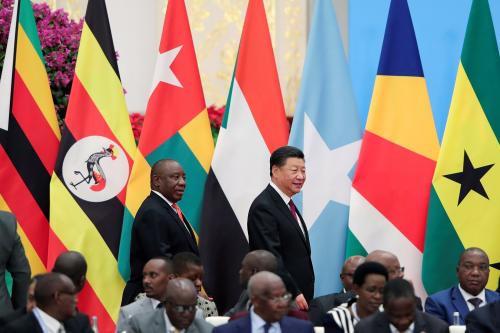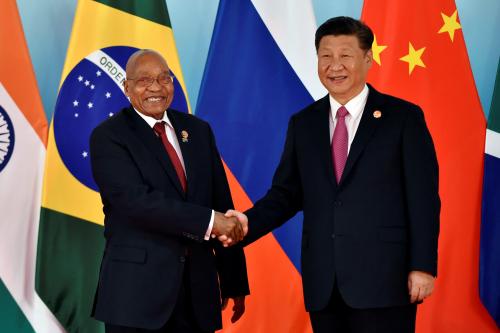This week, as the Forum on China-Africa Cooperation (FOCAC) opened, President Xi Jinping announced that China will be providing $60 billion in financial support to Africa. President Xi gave the following breakdown for the partial distribution of funds: $20 billion in credit lines, $15 billion in grants, interest-free loans and concessional loans, and $10 billion in investment financing. This support will come in the form of government assistance and investment. The investment plan has drawn criticism from pundits stating that it could burden developing nations with unsustainable levels of debt. In 2015, President Xi made a similar pledge to Africa; at the summit, he announced that the $60 billion promised in 2015 have been either delivered or arrangements are being made for deliveries. In light of President Xi’s announcement, this post presents figures on Chinese investment to Africa, the countries it is concentrated in, and the sectors they finance.
The American Enterprise Institute, a Washington, D.C., based think tank, has developed the China Global Investment Tracker. The tool presents data, ranging from 2005 to 2018, and covers thousands of transactions. As seen in Figure 1 below, Chinese investment has increased globally, and Africa is the third-largest destination for Chinese investment behind Asia and Europe. However, investment toward sub-Saharan Africa slightly declined in 2017, following the slight drop in aggregate Chinese investment.
Figure 1. Global Chinese investment since 2005
One-quarter of all Chinese investment is concentrated in Nigeria and Angola (Figure 2). Nigeria is one of China’s largest investment partners on the continent; five of the $60 billion pledged at the 2015 FOCAC summit were dedicated to Nigeria. In recent years, Nigeria has received relatively large funds from China for railways. China is backing two major standard-gauge rail projects: One is a line from Lagos to Kano, the other is a coastal railway from Lagos to Calabar. The Nigerian government hopes that the latter will support peacekeeping in the Niger Delta region, thus improving oil investments there (oil is another key interest of China in Africa).
Figure 2. Locational distribution of Chinese investment in Africa
Throughout the continent, Chinese investment are largely concentrated in transport and energy (Figure 3). As mentioned, China has largely invested in Nigeria’s railway. The country is also involved in building railways in Kenya, Ethiopia, and Zambia, among others. For instance, the Chinese Export-Import Bank provided 85 percent of the funding for the $475 million Addis Ababa Light Rail, which serves 4 million of the city’s residents. The investments in energy—though mainly made up of oil and gas investments—also comprised investment in clean energy such as hydropower. Worldwide, China is one of the leading investors in renewable energy. Last year, China invested $3 in renewable energy for every dollar the United States invested.
Figure 3. Sectoral distribution of Chinese investment in Africa
In conclusion, Chinese investment in Africa has noticeably increased over the past decade; as seen in Figure 1, investments toward Africa sharply increased after the 2015 FOCAC summit, where China committed $60 billion to the continent. Investments have been geographically concentrated in oil rich countries, like Nigeria and Angola, and in the transport and energy sectors. While skeptics are weary of China’s interest in Africa, even citing neo-colonialism, some African leaders are refuting this claim, as President Cyril Ramaphosa, co-chair of the FOCAC summit stated: “In the values that it promotes, in the manner that it operates, and in the impact that it has on African countries, FOCAC refutes the view that a new colonialism is taking hold in Africa, as our detractors would have us believe.”
The Brookings Institution is committed to quality, independence, and impact.
We are supported by a diverse array of funders. In line with our values and policies, each Brookings publication represents the sole views of its author(s).







Commentary
Figures of the week: Chinese investment in Africa
September 6, 2018